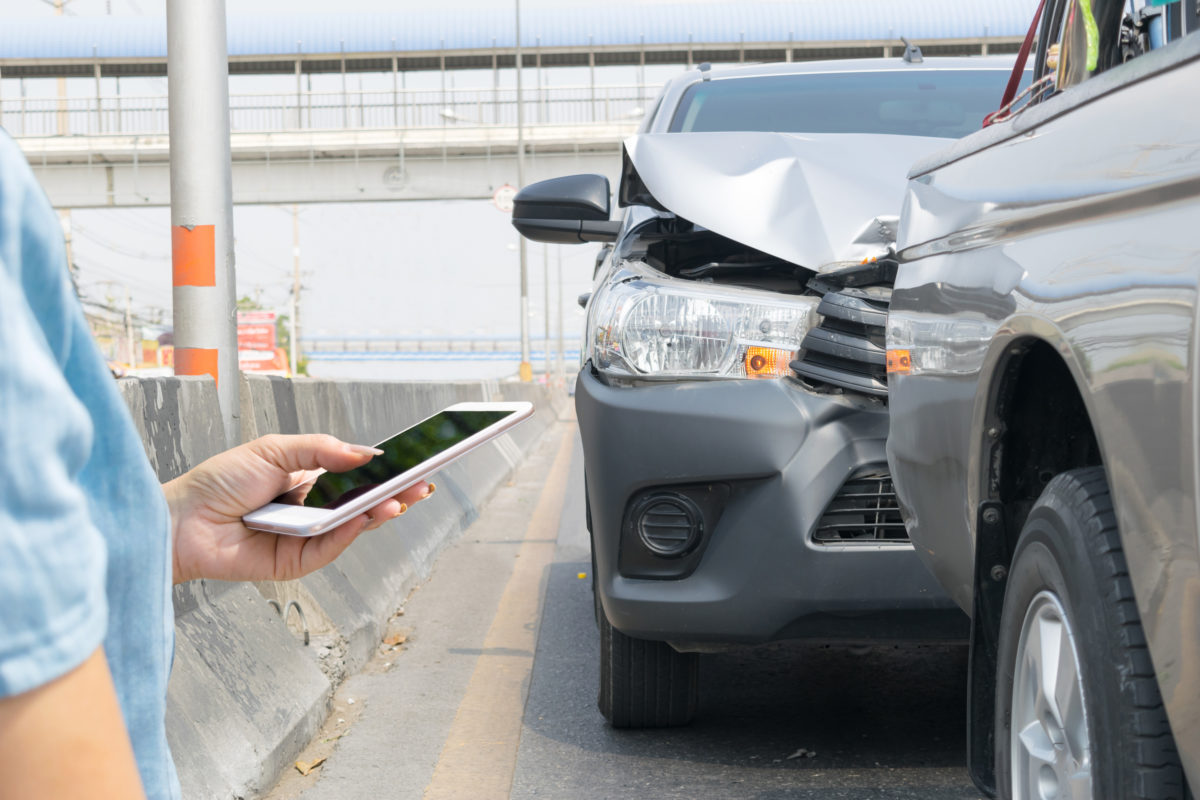
If you were injured in a car accident, one of the most important steps you can take to bolster your personal injury claim is to take photos. Continue reading and give our car accident attorneys a call today to learn more about what you should be taking pictures of.
What should I take pictures of after my car accident?
All Cars Involved
Keep in mind that photos should be taken of all of the cars that were involved in the accident, even if there is no damage to one of them. The photographs will be helpful in identifying the cars involved (license plate, make, model, color). Property damage to the cars should also be pictured. If safety permits, take pictures before the cars are moved. Take as many pictures as possible and ensure you also get shots close-up and from a distance. This is essential to establishing the location of impact, the force of collision speed of travel, and direction of movement. Take pictures of the front windshield of the other drivers’ cars. Sometimes something is hanging from the rearview mirror that blocks their view of the street.
Accident Scene
Take photos of the road and weather conditions, traffic signals and signs, and overall roadway layout. Pay attention to tire skid marks, broken glass, or other things left on the pavement. Sometimes visibility is an important factor in a car accident, so look for large objects that may have obstructed drivers’ view of the road. If there’s a potential argument regarding the color of the traffic light (i.e. red light versus green light), make a video that shows the timing of the lights at the intersection for all paths of travel.
Physical Injuries
Your injuries will gradually heal over time, so you should take photographs directly after an accident. Pictures of your injuries will help others recognize your physical condition after the car accident. Sometimes your medical practitioner will prescribe the use of devices such as an arm sling, cervical collar, walker, etc. Take photographs of these devices and, if possible, keep these devices in a safe place even after they become unnecessary for your medical treatment. These devices may be used as evidence in your case.
Important Tips
Make sure to set your digital camera or cellphone so that the date (and, if possible, time) appears in the photograph itself. This will help solve the problem of having to memorize when the photograph was taken if asked later on. Also, back up your digital photographs by saving them onto a second hard drive, copying them onto a thumb drive, burning a copy onto a CD or DVD, and/or printing out the photographs. The last thing you want happening is losing these photographs because of malfunctioning technology.
CONTACT OUR EXPERIENCED PENNSYLVANIA FIRM
Friedman Schuman is an experienced and dedicated legal resource for clients throughout Pennsylvania. Contact Friedman Schuman today to schedule a consultation.



